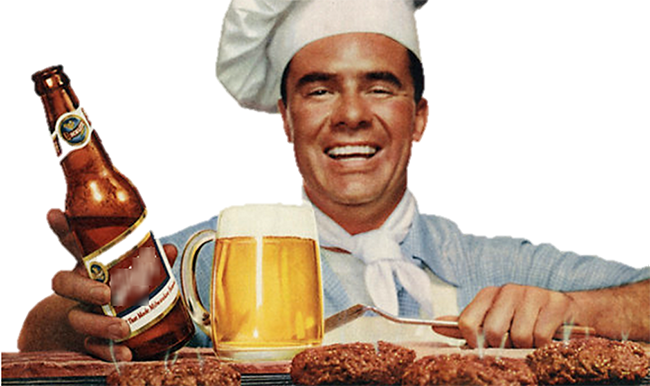 In the previous installment of our Exploration of Addiction series, we examined the adolescent years and how access, curiosity, and a number of other factors can influence adolescent drug and alcohol use. We now turn our attention to a demographic that is sometimes synonymous with excess, experimentation, and substance-abuse: young adulthood.
In the previous installment of our Exploration of Addiction series, we examined the adolescent years and how access, curiosity, and a number of other factors can influence adolescent drug and alcohol use. We now turn our attention to a demographic that is sometimes synonymous with excess, experimentation, and substance-abuse: young adulthood.
According to the National Institute on Alcohol Abuse and Alcoholism, college-age drinking is perceived by many young adults as a core part of their life. Casual or recreational drinking is one aspect of the experience; however binge drinking can create problematic behavior with sometimes unforgiving consequences.
More than one-third of full-time college students aged 18-22 engaged in binge drinking in the past month, with approximately 1 in 5 using an illicit drug in the same period of time according to the Substance Abuse and Mental Health Services Administration (SAMHSA). Research reveals exactly how damaging this new age of personal discovery can be if drugs and alcohol abuse takes hold:
- One in 4 college students report academic consequences from drinking
- About 97,000 students between ages of 18 and 24 report experiencing alcohol-related sexual assault or date rape
- An estimated 20 percent of college students meet the criteria for an alcohol use disorder
- Approximately 1,800 college students between ages of 18 and 24 die from alcohol-related unintentional injuries, like car accidents
In addition to increased alcohol use and binge drinking during early adulthood, experimentation with drugs also increases. The National Survey on Drug Use and Health found that drug use is highest among people in their late teens and twenties. Of all age demographics, this group corresponded to 21 percent of reported drug use in the past month.
What does this mean to the future of those young-adults that partake in this troubling trend? If left unchecked, this group is at greater risk of developing a substance-abuse disorder as they enter the workforce, typically the next stage in their lives. Understandably, employers are unlikely to hire job candidates or tolerate employees who abuse drugs or alcohol. For this reason, it’s crucial for those closest to young adults to watch for signs of a budding substance-abuse disorder and intervene as soon as possible. Thankfully, many resources such as Partnership for Drug-Free Kids can help to facilitate conversations when drug and alcohol abuse is suspected.
In the end, prevention efforts centered on education and open lines of communication are essential to divert risky and dangerous behavior before it becomes life altering. To learn more about this blog series, read our introductory post.
If you or someone you know is unable to stop using drugs or alcohol, seek a referral from your primary care physician or locate an addiction specialist through the American Society of Addiction Medicine.
Read more about how drug abuse affects the workplace, visit our website.
 Your Privacy Choices
|
Privacy Notices
|
Terms
|
Language Assistance / Non-Discrimination Notice | Asistencia de Idiomas / Aviso de no Discriminación | 語言協助 / 不䈚視通知
Your Privacy Choices
|
Privacy Notices
|
Terms
|
Language Assistance / Non-Discrimination Notice | Asistencia de Idiomas / Aviso de no Discriminación | 語言協助 / 不䈚視通知







According to the National Institute on Alcohol Abuse and Alcoholism, college-age drinking is perceived by many young adults as a core part of their life. Casual or recreational drinking is one aspect of the experience; however binge drinking can create problematic behavior with sometimes unforgiving consequences.
More than one-third of full-time college students aged 18-22 engaged in binge drinking in the past month, with approximately 1 in 5 using an illicit drug in the same period of time according to the Substance Abuse and Mental Health Services Administration (SAMHSA). Research reveals exactly how damaging this new age of personal discovery can be if drugs and alcohol abuse takes hold:
In addition to increased alcohol use and binge drinking during early adulthood, experimentation with drugs also increases. The National Survey on Drug Use and Health found that drug use is highest among people in their late teens and twenties. Of all age demographics, this group corresponded to 21 percent of reported drug use in the past month.
What does this mean to the future of those young-adults that partake in this troubling trend? If left unchecked, this group is at greater risk of developing a substance-abuse disorder as they enter the workforce, typically the next stage in their lives. Understandably, employers are unlikely to hire job candidates or tolerate employees who abuse drugs or alcohol. For this reason, it’s crucial for those closest to young adults to watch for signs of a budding substance-abuse disorder and intervene as soon as possible. Thankfully, many resources such as Partnership for Drug-Free Kids can help to facilitate conversations when drug and alcohol abuse is suspected.
In the end, prevention efforts centered on education and open lines of communication are essential to divert risky and dangerous behavior before it becomes life altering. To learn more about this blog series, read our introductory post.
If you or someone you know is unable to stop using drugs or alcohol, seek a referral from your primary care physician or locate an addiction specialist through the American Society of Addiction Medicine.
Read more about how drug abuse affects the workplace, visit our website.